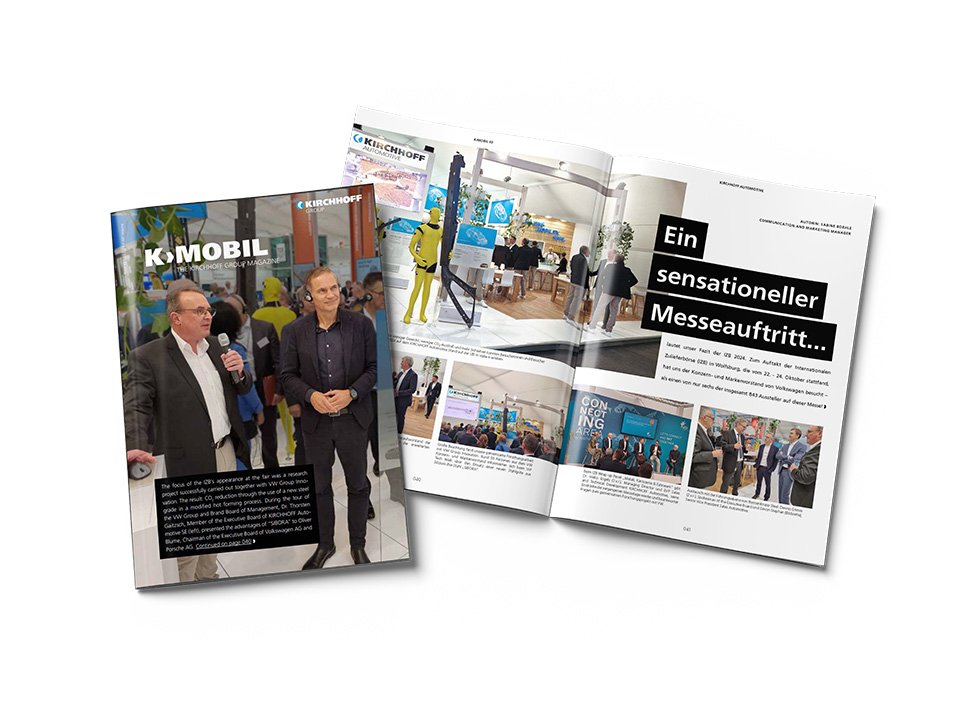From a single part to the body-in-white structure
Ever since cars have existed, we have been developing, producing, and supplying metal parts—and, for the vehicles of today, hybrid structures—for the automotive industry. From a manufacturer of individual parts, we have grown into an internationally recognized development supplier of components and body-in-white structures.
KIRCHHOFF Automotive provides vehicles worldwide with extra stability and safety.
But we also offer our customers much more than that: we make a considerable contribution to the growth of their competitiveness.
The crucial cost and logistical advantages of our streamlined, medium-sized company structure with international presence serves a single purpose: to drive the market success of our customers and safeguard our innovative strength and earning power. This is our pledge worldwide.
17-12-24
The winter issue of K>MOBIL is here!
We look back on another challenging year.
Read here in the latest issue of K>MOBIL how the KIRCHHOFF Group was able to continue growing in 2024 through a high degree of adaptability and rapid action.
Sustainability remains a central topic. KIRCHHOFF Automotive has deepened its partnership with leading steel manufacturers to bring body parts made of CO2-reduced steel to series production. KIRCHHOFF Ecotec is developing advanced technologies to reduce emissions from waste collection vehicles and to promote the circular economy. With groundbreaking innovations in the production of sustainable products, we see the KIRCHHOFF Group as well positioned for the future and continue to focus on growth worldwide with investments in modern technologies. Read more about this and the following topics in this edition of K>MOBIL:
- Editorial: “In turbulent times” – a look back at 2024
- CO2 reduction: materials and forming technology are crucial
- 25 years of KIRCHHOFF Automotive in Poland: a success story
- ENGINIUS presents a new zero-emission truck for urban traffic
- FAUN and ZOELLER continue to grow
- Successful trade fair appearances with new innovative products
The publisher of K>MOBIL, Arndt G. Kirchhoff, and the entire editorial team wish you an enjoyable read, relaxing holidays and a good start to a successful new Year.
In addition to the digital version for download, printed copies will be available from mid-December in the entrance areas and canteens, or at other central locations in our plants.










